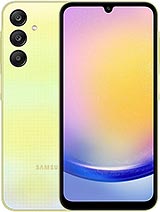Samsung Galaxy F34 alternatives
Tap above to see alternatives.
Tecno Pova Curve 5G alternatives
Tap above to see alternatives.
Samsung Galaxy F34

Samsung Galaxy F34
-
Exynos 1280
5 nm
-
6000 mAh
25W
-
6.5"
1080 x 2340 pixels
-
50 MP
4K@30fps
-
Specs

Tecno Pova Curve 5G

Tecno Pova Curve 5G
-
Dimensity 7300
4 nm
-
5500 mAh
45W
-
6.78"
1080 x 2436 pixels
-
64 MP
4K@30fps
- Specs
2x2.4 GHz Cortex-A78
6x2.0 GHz Cortex-A55
4x2.5 GHz Cortex-A78
4x2.0 GHz Cortex-A55
8GB 128GB (UFS 2.2)
8GB 128GB (UFS 2.2)
f/1.8, (wide), PDAF, OIS
8 MP
f/2.2, 120˚ (ultrawide)
2 MP
f/2.4
Sony IMX682, f/1.8, (wide), 1/1.73", 0.8µm, PDAF
2 MP
f/2.4, (depth)
1080p@30fps
1080p@30fps
f/2.2, (wide)
(Wide), f/2.2
1080p@30fps
SIM1: Nano, SIM2: Nano (Hybrid)
SIM1: Nano, SIM2: Nano
FDD: N1, N3, N5, N7, N8, N28
TDD: N38, N40, N41, N78
FDD: N3
TDD: N38
FDD: N1, N3, N5, N7, N8, N28
TDD: N38, N40, N41, N78
FDD: N3
TDD: N40
In this performance comparison, the Tecno Pova Curve 5G with its Mediatek Dimensity 7300 (4nm) performs better than the Samsung Galaxy F34 with the Exynos 1280 (5nm), thanks to superior chipset efficiency.
Samsung Galaxy F34 offers 4 years of OS updates, whereas Tecno Pova Curve 5G provides 2 years. For security updates, Samsung Galaxy F34 offers 5 years of support compared to Tecno Pova Curve 5G's 2 years.
Both Samsung Galaxy F34 and Tecno Pova Curve 5G feature AMOLED displays, offering vibrant colors and deeper blacks. In terms of smoothness, Tecno Pova Curve 5G offers a higher 144 Hz refresh rate, ensuring fluid scrolling and animations. Tecno Pova Curve 5G also boasts a brighter screen with 1300 nits of peak brightness, enhancing outdoor visibility. Both phones have the same screen resolution.
Samsung Galaxy F34 comes with a larger 6000 mAh battery, which may offer longer usage on a single charge. Tecno Pova Curve 5G also supports faster wired charging at 45W, compared to 25W on Samsung Galaxy F34.
Samsung Galaxy F34 offers better protection against water and dust with an IP67 rating.
- Samsung Galaxy F34 – Check price here
¹ Scores can vary even with the same chipset due to RAM, thermals, and software optimization.










